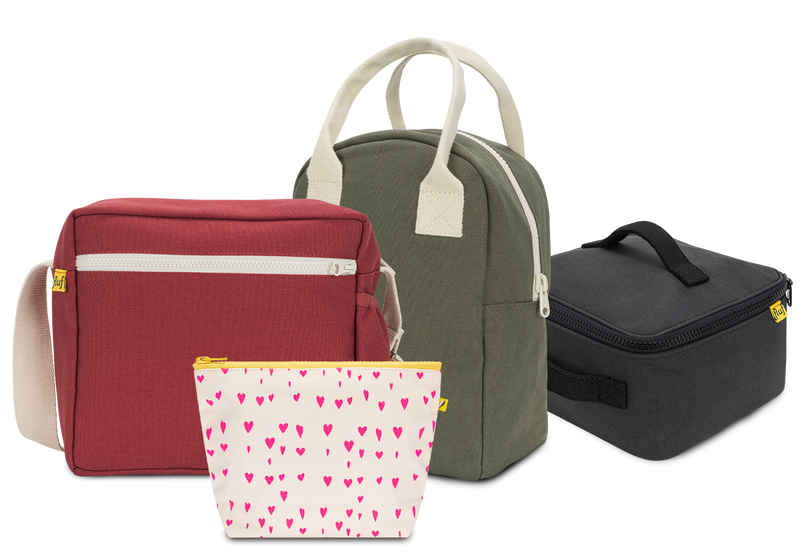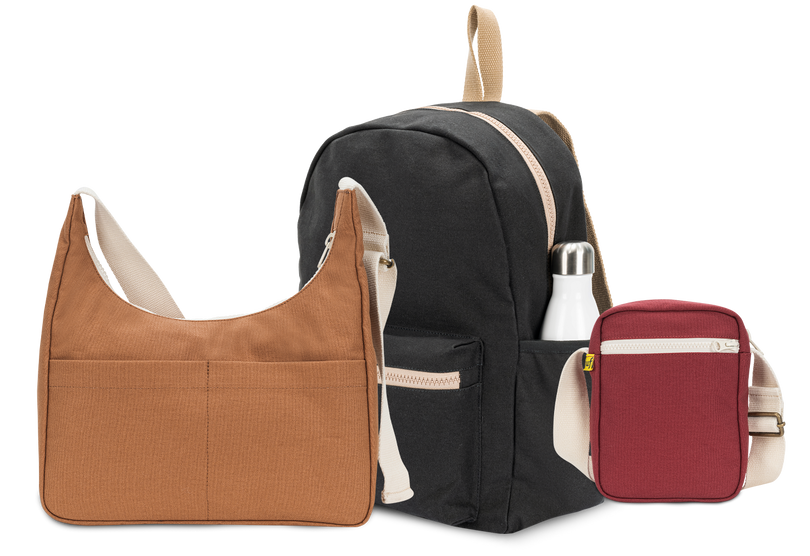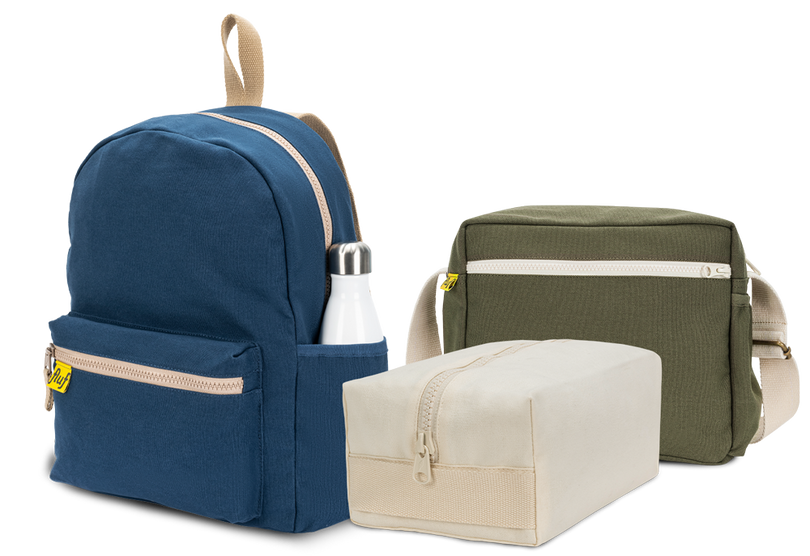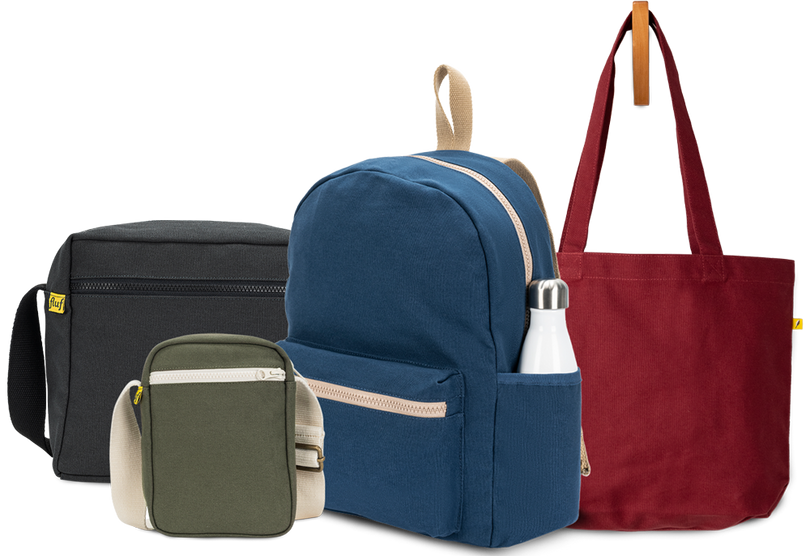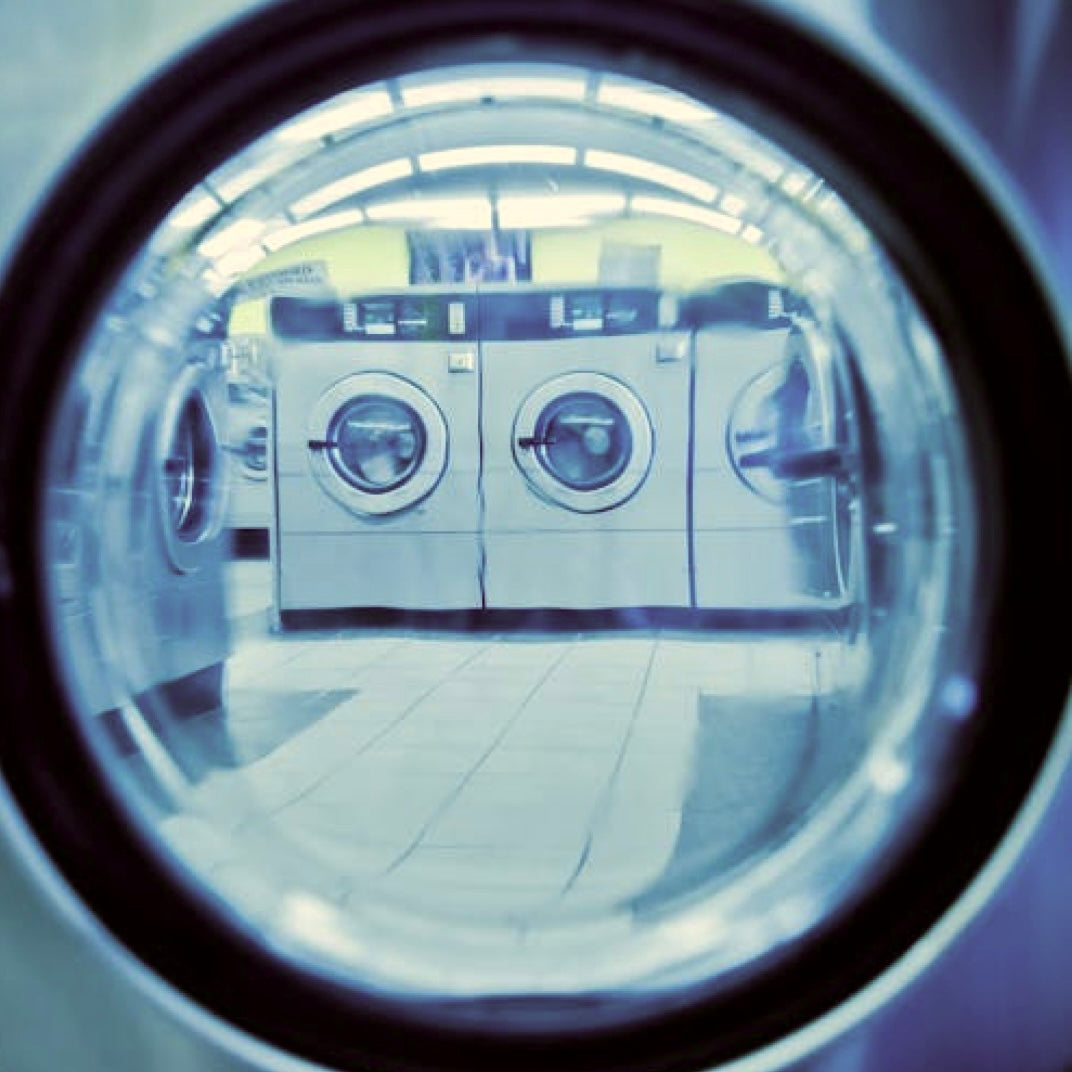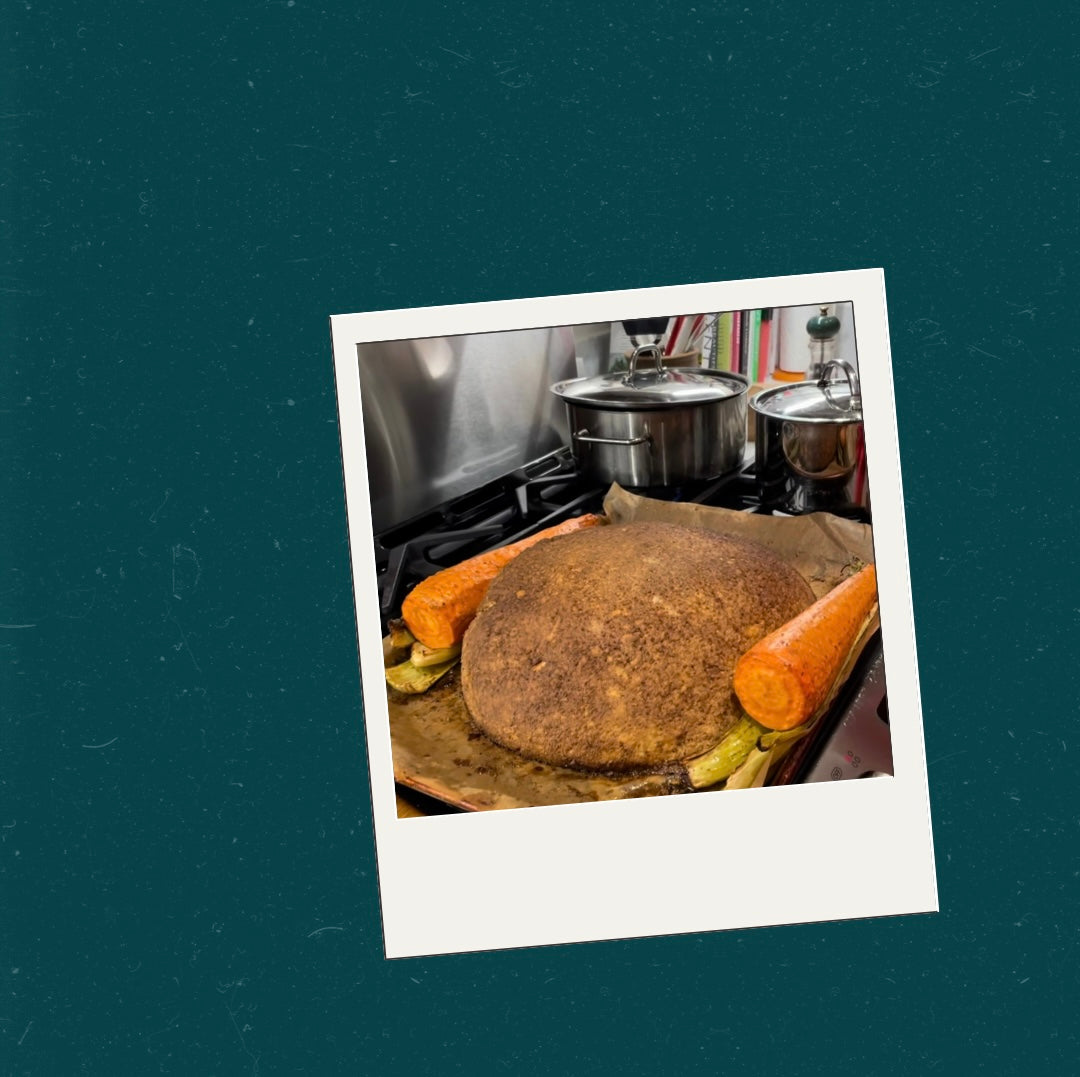The Dirt on Washability
When we were asked to design a lunch bag in 2010, lunch bags weren’t even remotely on our radar. The request came from a corporate lunch program, and they wanted it constructed with the thick, industrial felt used in some other products we were making at the time.
Despite our better judgment, we made the sample. The bags looked great, but they made no sense: felt was a terrible material for a lunch bag. It was absorbent (wet dog vibes), spot-clean only, and definitely not machine washable.
They didn’t go ahead with the bags (surprise), but we’d stumbled onto a bigger issue: almost every kids’ lunch bag on the market was spot-clean only. Glossy, boxy, lined with foamy silver insulation - and never machine washable. Mind. Blown.
Anyone who’s ever packed a lunch for a kid knows food doesn’t stay where you put it. It travels and settles into seams and corners. For most mortals, ‘spot-clean only’ just means ‘stinky and gross’.
So we set out to create something totally different: a machine washable lunch bag, that would also be super cute, sustainably made and – above all – healthy and safe for the whole family.
At first, we were committed to washability only because it seemed like a necessary, practical feature for a lunch bag. But over time, we realized it was so much more meaningful than that. The simple fact that most lunch bags can’t be washed says a lot about how they’re made — and what they’re made from.
Why most lunch bags aren’t washable
Most conventional lunch bags are made with materials that can’t handle the wash.
That usually means synthetic fabrics (like polyester or nylon) that are coated with something to make them water-resistant, shiny, or structured. This includes vinyl, PVC, PU (polyurethane), or chemical stain-resistant finishes like PFAS.
These coatings and laminates can’t go in the wash because:
· They'll crack, peel, or even melt
· The coating will break down and become ineffective (and leach chemicals
in the process)
· The fabric backing may absorb water, trap bacteria, and develop smells
Lunch bags made with these materials can’t actually be submerged in water without breaking down, literally. They may look clean on the outside, but they’re hard to truly sanitize, especially with food trapped in hard-to-reach crevices. Over time, they starts to look (and smell) like a mildewy kitchen cloth.
If you are making the best of one of these bags, there are lots of discussion forums sharing tips on how to get rid of the nasty smells. Everything from leaving them in the freezer overnight, to wiping them out with baking soda or vinegar (MOMables has some pretty good tips if you are in need).

Red Flags to Look for When Choosing a Lunch Bag
With all that in mind, here are some specific red flags to look for when choosing a new lunch bag.
🚩 “Spot Clean Only” Labels
If a bag can’t be tossed in the wash, there’s usually a reason. It often means the materials or construction can’t withstand water, detergent, or agitation — which raises questions about long-term durability and hygiene.
🚩 Shiny or Stiff Exterior Fabrics
Glossy, plasticky fabrics are often made from vinyl (PVC), polyurethane (PU), or polyester coated with something to make them wipeable. These coatings can contain a mix of harmful chemicals, including phthalates, PFAS, formaldehyde-based resins, and even heavy metals like lead. Over time, they can break down, peel, or leach, and they’re nearly impossible to clean properly once food and moisture settle in.
🚩 Terms Like “Stain-Resistant” or “Water-Repellent” Without Details
These features sound great, but they often signal the use of chemical finishes like PFAS or formaldehyde-based resins, both of which are associated with long-term health and environmental concerns. Unless the brand clearly states what is used to achieve those properties, this is a clear signal to stay away.
🚩 Antimicrobial treatments
Like stain resistance, anti-microbial treatments often rely on harsh chemical additives (including nano-silver, triclosan, or quaternary ammonium compounds). They are designed to kill bacteria, but they don’t wash out easily, and their long-term effects on human health and the environment are still being studied. Given their unknown impacts on human health, we wouldn’t want these chemicals anywhere near our food, especially not sealed into a bag that traps heat and moisture.
Clean, washable materials are a safer and simpler solution.
A Note on Neoprene
Just as ‘spot clean only’ is only a signal to dig deeper, washability alone doesn’t guarantee safety or sustainability either.
Neoprene is a common lunch bag material that seems to check all the boxes. It has some insulation properties and is machine washable, which seems great at first. But it’s also a synthetic rubber made from petrochemicals, and it’s not biodegradable or easily recyclable. It’s produced through an energy-intensive process that uses chloroprene, a substance the U.S. EPA has classified as “likely to be carcinogenic to humans” in certain forms of exposure (primarily in industrial settings).
So while neoprene might technically be machine washable, it’s not what we’d consider a ‘clean’ material, either from a health or environmental standpoint. It also tends to hold onto moisture and odours over time, so … there’s that.
Ultimately, washable or not, it's always important to understand what your bag is made of.
Final Thoughts
When we started on our simple quest to make a machine washable lunch bag, it just felt like a smart, functional choice. But it ultimately became a lens through which we saw the whole product differently. It pushed us to think more critically about materials, safety, durability, and transparency.
Washability may not tell you everything, but it does tell you something. For us, that simple design decision ended up shaping our entire philosophy.
Today, everything we make is crafted with high-quality organic and recycled materials, rigorously tested for health and safety, and always machine washable. 🫧

